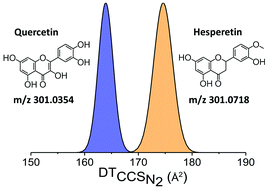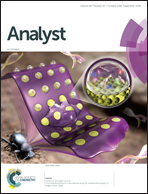Mobilising ion mobility mass spectrometry for metabolomics†
Abstract
Chromatography-based mass spectrometry approaches (xC-MS) are commonly used in untargeted metabolomics, providing retention time, m/z values and metabolite-specific fragments, all of which are used to identify and validate an unknown analyte. Ion mobility-mass spectrometry (IM-MS) is emerging as an enhancement to classic xC-MS strategies, by offering additional ion separation as well as collision cross section (CCS) determination. In order to apply such an approach to a metabolomics workflow, verified data from metabolite standards is necessary. In this work we present experimental DTCCSN2 values for a range of metabolites in positive and negative ionisation modes using drift tube-ion mobility-mass spectrometry (DT-IM-MS) with nitrogen as the buffer gas. The value of DTCCSN2 measurements for application in metabolite identification relies on a robust technique that acquires measurements of high reproducibility. We report that the CCS values found for 86% of metabolites measured in replicate have a relative standard deviation lower than 0.2%. Examples of metabolites with near identical mass are demonstrated to be separated by ion mobility with over 4% difference in DTCCSN2 values. We conclude that the integration of ion mobility into current LC-MS workflows can aid in small molecule identification for both targeted and untargeted metabolite screening.

- This article is part of the themed collection: Celebrating our 2019 Prize and Award winners


 Please wait while we load your content...
Please wait while we load your content...